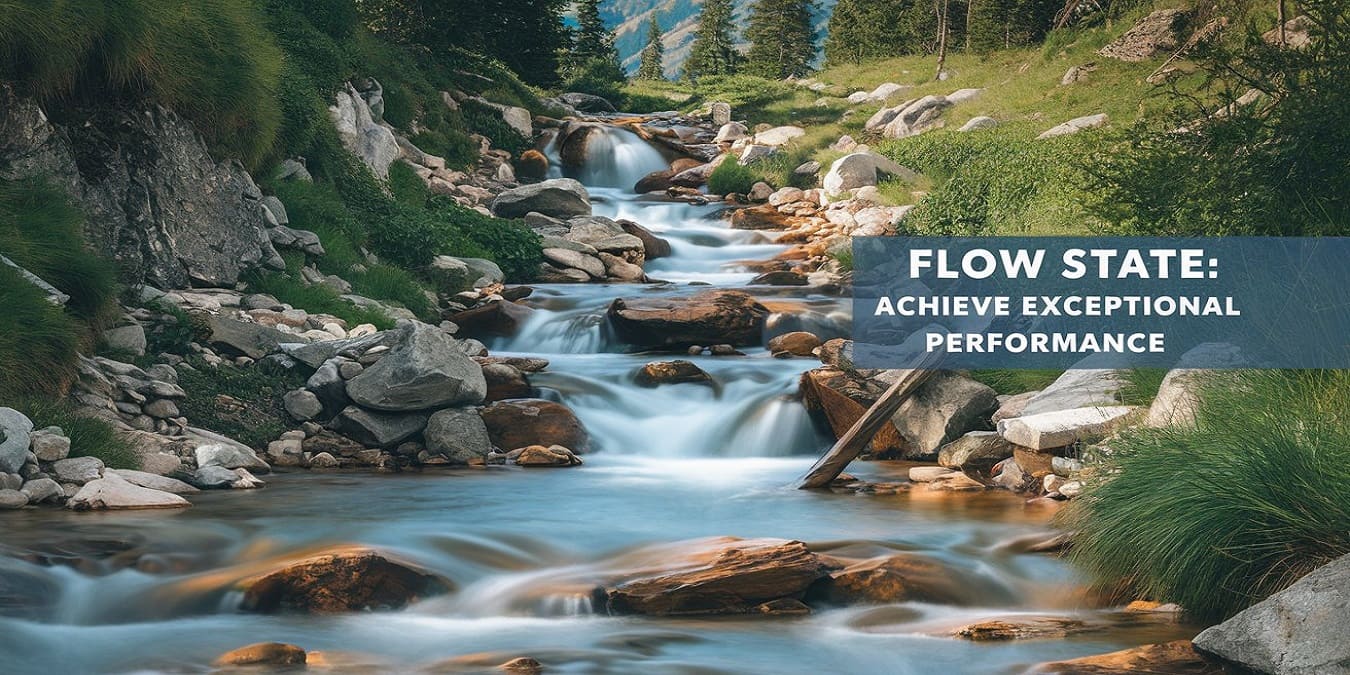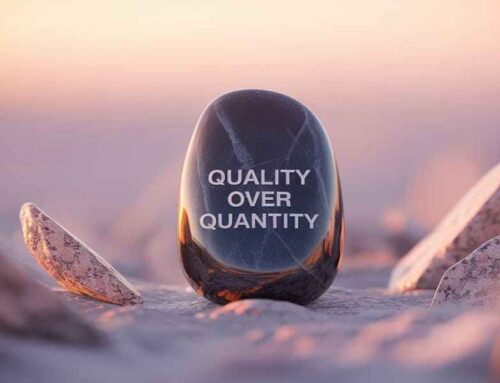
Flow State
Have you ever been so immersed in a task that time seemed to vanish? Your focus was razor-sharp, your creativity soared and you felt unstoppable. This magical state of mind is called the flow state and it’s the secret behind exceptional performance. Whether you’re an athlete, an artist, a CEO or a student, tapping into the flow state can transform how you work, create and live.
But what exactly is the flow state? How can you achieve it consistently? And why is it so powerful?
In this comprehensive guide, we’ll explore the science behind the flow state, its benefits and actionable strategies to help you unlock this peak performance mindset. Ready to elevate your game? Let’s dive in.
What Is the Flow State?
The flow state, often referred to as “Being in the zone,” is a mental state where you’re fully immersed in an activity. Coined by psychologist Mihaly Csikszentmihalyi, the flow state is characterized by complete focus, effortless concentration and a sense of timelessness. It’s that sweet spot where challenge and skill are perfectly balanced, allowing you to perform at your absolute best.
Think of a musician lost in a performance, a writer crafting a novel or a basketball player sinking shot after shot. These are all examples of the flow state in action. But it’s not just for artists and athletes, anyone can achieve it with the right mindset and techniques.
Why Is the Flow State So Powerful?
The flow state isn’t just about feeling good, it’s about performing at your peak. Here’s why it’s a game-changer.
- Enhanced Productivity: When you’re in the flow, distractions fade away and you accomplish more in less time.
- Boosted Creativity: The flow state unlocks your brain’s creative potential, helping you solve problems and generate innovative ideas.
- Improved Learning: Flow accelerates skill acquisition, making it easier to master new tasks.
- Greater Fulfillment: Achieving flow brings a deep sense of satisfaction and joy, making work feel more meaningful.
In short, the flow state is the ultimate performance enhancer. But how do you get there? Let’s break it down.
The Science Behind the Flow State
To understand how to achieve the flow state, it’s helpful to know what’s happening in your brain. During flow, your brainwaves shift into a specific pattern and several key neurotransmitters come into play.
- Dopamine: This “feel-good” chemical boosts motivation and focus.
- Norepinephrine: Increases alertness and sharpens attention.
- Endorphins: Reduce pain and create a sense of euphoria.
- Anandamide: Enhances creativity and lateral thinking.
Together, these chemicals create the perfect environment for exceptional performance. But achieving flow isn’t just about brain chemistry, it’s also about creating the right conditions.
How to Achieve the Flow State: 10 Proven Strategies
-
Set Clear Goals
Having a clear objective gives your brain a target to focus on. Whether it’s finishing a project, learning a new skill or winning a game, knowing your goal is the first step toward flow.
Pro Tip: Break big goals into smaller, manageable tasks to maintain momentum.
-
Eliminate Distractions
Flow requires uninterrupted focus. Turn off notifications, close unnecessary tabs and create a distraction-free environment.
Pro Tip: Use tools like the Pomodoro Technique to structure focused work sessions.
-
Balance Challenge and Skill
Flow happens when the task is challenging enough to engage you but not so difficult that it causes stress. Find the sweet spot where your skills meet the challenge.
Pro Tip: Gradually increase the difficulty of tasks to keep pushing your limits.
-
Practice Deep Work
Deep work is the ability to focus without distraction on a cognitively demanding task. It’s a skill that can be developed with practice.
Pro Tip: Schedule deep work sessions during your most productive hours.
-
Embrace Mindfulness
Mindfulness helps you stay present and fully engaged in the task at hand. Techniques like meditation and deep breathing can enhance your ability to enter the flow state.
Pro Tip: Start your day with a 5-minute mindfulness practice to set the tone.
-
Leverage Intrinsic Motivation
Flow is more likely when you’re doing something you genuinely enjoy. Tap into your passions and align your tasks with your values.
Pro Tip: Reflect on why the task matters to you to boost motivation.
-
Create a Flow-Friendly Environment
Your surroundings play a big role in your ability to focus. Optimize your workspace for comfort, inspiration and minimal distractions.
Pro Tip: Add elements like plants, natural light or calming music to enhance your environment.
-
Take Care of Your Body
Physical well-being is crucial for mental performance. Prioritize sleep, nutrition and exercise to keep your brain in peak condition.
Pro Tip: Incorporate movement breaks into your day to recharge your focus.
-
Practice Regularly
Like any skill, achieving flow gets easier with practice. The more you train your brain to enter this state, the more natural it becomes.
Pro Tip: Start with activities you already enjoy to build your flow muscle.
-
Reflect and Adjust
After each flow session, reflect on what worked and what didn’t. Use this feedback to refine your approach and improve your chances of entering flow in the future.
Pro Tip: Keep a flow journal to track your progress and insights.
Real-Life Examples of Flow State
Athletes
Elite athletes like Michael Jordan and Serena Williams often describe being “In the zone” during their best performances. Their ability to enter the flow state has been a key factor in their success.
Artists
Musicians, writers and painters frequently experience flow while creating. For example, composer Ludwig van Beethoven wrote some of his greatest works while in a state of deep immersion.
Entrepreneurs
Business leaders like Elon Musk and Oprah Winfrey credit their ability to focus deeply as a major driver of their achievements.
Common Barriers to Flow
While the flow state is powerful, it’s not always easy to achieve. Here are some common obstacles and how to overcome them.
- Multitasking: Trying to do too many things at once kills focus. Stick to one task at a time.
- Fear of Failure: Worrying about outcomes can disrupt flow. Focus on the process, not the result.
- Lack of Clarity: Unclear goals make it hard to focus. Define your objectives before starting.
- Fatigue: Exhaustion hampers concentration. Prioritize rest and recovery.
The Long-Term Benefits of Flow
Consistently achieving the flow state doesn’t just improve your performance, it transforms your life. Here’s how.
- Increased Confidence: Mastering flow builds self-belief and resilience.
- Greater Happiness: Flow is associated with higher levels of life satisfaction.
- Enhanced Relationships: Being present and engaged improves your interactions with others.
- Lifelong Learning: Flow fosters a growth mindset, encouraging continuous improvement.
Final Thoughts
The flow state is more than just a productivity hack, it’s a gateway to exceptional performance and a more fulfilling life. By setting clear goals, eliminating distractions and practicing mindfulness, you can train your brain to enter this powerful state more often.
Remember, achieving flow is a skill that takes time and effort to develop. Start small, stay consistent and celebrate your progress along the way. Before you know it, you’ll be unlocking your full potential and achieving greatness in every area of your life.
So, what’s your first step toward entering the flow state? Take action today and experience the transformative power of being in the zone.
FAQs
Q: What is the flow state?
A: The flow state is a mental state of complete focus and immersion in an activity, often leading to peak performance.
Q: How do I know if I’m in the flow state?
A: Common signs include losing track of time, feeling fully engaged and experiencing a sense of effortless concentration.
Q: Can anyone achieve the flow state?
A: Yes, with practice and the right conditions, anyone can learn to enter the flow state.
Q: How long does it take to achieve flow?
A: It varies, but with consistent practice, you can start experiencing flow within a few weeks.
Q: What activities are best for achieving flow?
A: Activities that challenge your skills and align with your interests, such as sports, creative work or problem-solving tasks, are ideal.
Q: Can flow improve mental health?
A: Yes, flow is associated with reduced stress, increased happiness and greater life satisfaction.
Q: How can I maintain flow once I achieve it?
A: Minimize interruptions, stay present and continue challenging yourself to maintain the flow state.
By mastering the flow state, you can unlock your potential and achieve exceptional performance in every aspect of your life. Start your journey today.














